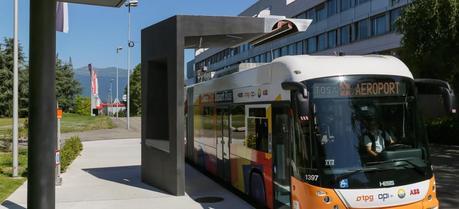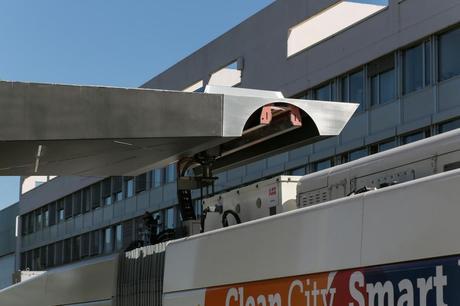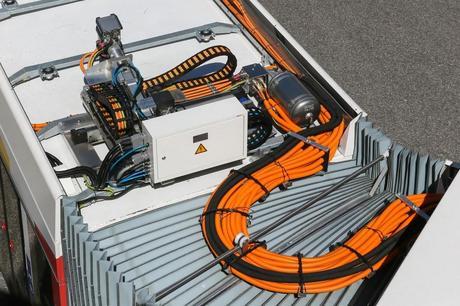 A pilot electric bus project will use a mathematical model to reduce operational costs. (Credit: EPFL)
A pilot electric bus project will use a mathematical model to reduce operational costs. (Credit: EPFL)Scientists at the Swiss Federal Institute of Technology in Lausanne (EPFL) have created a mathematical model that helps to reduce operational and infrastructure costs of the TOSA electric bus system.
In Geneva, ABB Sécheron and its partners (TPG, SIG and OPI) have just concluded a successful pilot operation of their electric bus system TOSA. According to the project’s website, TOSA is the first electric articulated bus that runs without overhead lines. With its so-called “flash” charging, it recharges at the bus stops along the route in record time of 15 seconds. This is the time it takes for passengers to disembark and embark. And it’s enough time to store up the energy needed to get to a recharging station at an upcoming stop or the terminus.
SEE ALSO: Electric School Buses Could Save Millions of Dollars

TOSA system charging station at a bus stop. (Credit: EPFL)
Energy is drawn from the grid and stored at the “flash” stations, thereby avoiding short peaks of energy consumption. The innovation of the rechargeable TOSA buses is that they provide large-capacity (133 passengers), 100% electric vehicles without the use of overhead lines and with batteries that are small enough—twice the energy of an electric car battery—to ride on the roof of the bus. At certain stops, a robotic arm on the roof zips out automatically and connects to recharge the battery.
EPFL scientists have developed software that simulates the creation of a public transport line that minimizes costs as a function of operational constraints, connection with the electricity network and the route profile. It’s a web interface that offers a cost-benefit analysis of a TOSA line in order to determine the least expensive technical configuration for a given network.
To measure the competitiveness of a TOSA line, many parameters must be taken into account. They are determined by price, but also by the needs of bus operators and technological constraints. The model developed by EPFL researchers takes into account infrastructure and component cost (batteries, connection to the electricity network, recharge station placement) as well as the life expectancy of the components. It also incorporates parameters such as a bus driver’s salary and the electricity rate. All told, 56 variables are taken into consideration to determine the most cost-effective and efficient system.

TOSA system electrical equipment on the roof of the bus. (Credit: EPFL)
The algorithm is based on a model that the Haute Ecole ARC developed of the requirements of the buses (electric, electronic and power) and the charging stations (at the end of the line, on the route, or at the depot) as a function of route conditions. This includes variables like the number of passengers, the recuperation of braking energy, altitude, speed and even weather conditions.
The entire modeling and cost optimization project was integrated into a web interface, making it possible to design a virtual TOSA line for a given city and estimate its cost. Many cities have expressed interest in TOSA technology, but Geneva will be the first city to adopt a regular TOSA line, somewhere around 2017. The challenge is now to optimize costs for a complex bus network that includes several TOSA lines.

